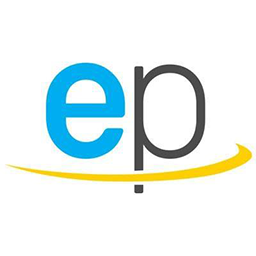Three-row 25Gbs board-to-board connector deals with more data throughput
21-04-2015 |
ERNI Components
|
Connectors, Switches & EMECH
ERNI, a leading supplier of connectors and value added services, has
expanded its 1mm pitch MicroSpeed high-speed connector system to include a
new three-row version. The MicroSpeed connector system features SMT
terminals that provide a high contact density capable of speeds up to
25Gbps. The open pin-field design allows for a third (centre) row that can
be selectively assigned as ground to optimize signal quality between the
higher speed signal conductors or rows.
The open pin field construction of the MicroSpeed connector can accommodate
differential or single-ended signals, while maintaining maximum performance
speed. The MicroSpeed straight (180 degree) connectors are ideal for
board-to-board connections (mezzanine) or board connection via flex PCBs.
Initially designed for board-to-board distances of 5mm (1mm male and 4mm
female), effective spacing up to 6.5mm can be realized when considering a
long 1.5mm wipe length.
The new connectors are ideal for next-generation communication standards
like Ethernet 100Gbps (IEEE 802.3ba), Optical Internetworking Forum (OIF),
PCIe and USB 3.1, and more. Typical applications that benefit from the
connectors are data communications and telecommunications, high-end
computing, medical technology, or industrial automation with high-speed
transmissions and high data volumes.
"With this latest MicroSpeed variant, ERNI is answering customer requests
for more data throughput without compromising electrical performance or
shielding effectiveness. Improvements to the shield design further minimizes
inductive coupling while the open pin array offers maximum flexibility in
routing and segregating of low and high-speed signalling requirements," said
Kevin N. Oursler, US director of sales and marketing.
The three-row MicroSpeed high-speed connector system has a frame design with
polarized mating face and self-centring during connector placement, 1.5mm
wipe length, and the robust blind-mate design that provides safe and
reliable usage for industrial requirements. A security measure for system
integration is afforded by the generous mis-mating allowances of the unique
contact design, which offers a longitudinal misalignment tolerance of +/-
0.7mm and angular misalignment tolerance of up to four degrees. In addition,
the dual-beam female contact design offers high tolerance compensation and
proven reliability over the life of the product.
The rows of signal pins in the board-to-board configuration are shielded on
the perimeter of the connector body and can be optimized for high impedance
signal transmissions. The impedance-matched (50/100ohm) connectors are
specified for the extended temperature range of -55C to +125C. The SMT
coplanarity is fully guaranteed and specified with less than 0.1mm for all
the contacts. The longitudinal pitch of 1.0mm and the row spacing of 1.5mm
permit horizontal and vertical arrangements of the differential pairs or
single-ended signals depending on the application and/or requirement with
regard to crosstalk. Optimum crosstalk behaviour can be achieved by means of
special layout configurations - with ERNI providing support in the form of
field-tested suggestions.
MicroSpeed connectors are capable of 500+ mating cycles and accommodates
extended temperature ranges of -55C to +125C The current-carrying capacity
is 1A for the signal contacts and 10A for the shielding. The connectors are
available with 75 and 192 pins (3 x 25 and 3 x 64), and additional pin
numbers can be offered upon request, says the company.
By Electropages
Electropages is a trusted source of news and insights from the global electronics industry. With a dedicated team of experts and editors, Electropages delivers in-depth articles, product updates, and market trends across sectors such as embedded systems, IoT, connectors, and power solutions. Our mission is to empower engineers and professionals with the knowledge they need to innovate and succeed in a rapidly evolving technological landscape.

